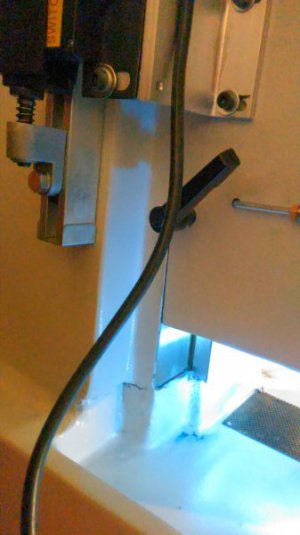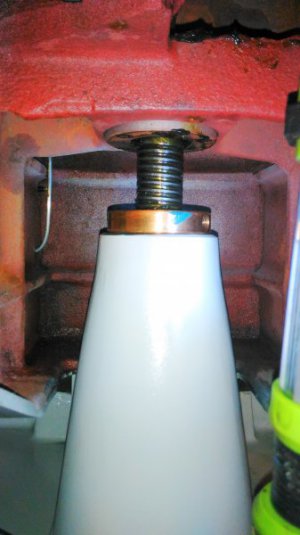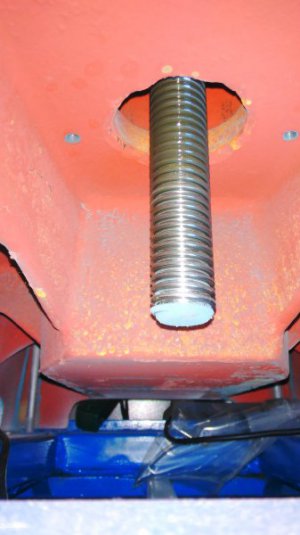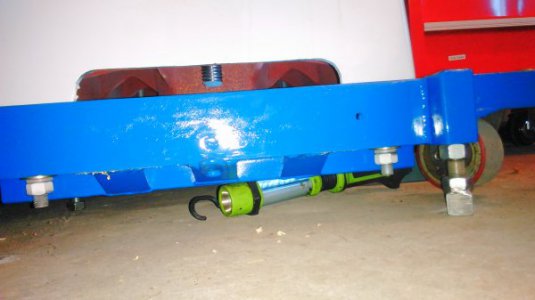- Joined
- Jun 20, 2016
- Messages
- 346
Question about how far down I can lower the knee. I'm using a chuck on my rotary table and a boring head.
I have barely enough room left to get tooling in. Had to use a short 3" boring bar. I can see another 2 inches of shiny ways below where the knee is stopped by the limit switch.
Is there any harm in moving the limit switches down farther ???
I can use the boring head, but I could really use that extra 2 inches of Z travel for more versatility.
Would anything get stuck if I lowered the knee nearer the bottom of the ways ?
To me it looks like I could still lower it another 2 inches , or at least 1.75" and stop 1/4" below the end of the ways, still have 1/4" of ways showing.
Thanks in advance, I appreciate it !
~Steve
--------------------------------------------------------------------------------

I have barely enough room left to get tooling in. Had to use a short 3" boring bar. I can see another 2 inches of shiny ways below where the knee is stopped by the limit switch.
Is there any harm in moving the limit switches down farther ???
I can use the boring head, but I could really use that extra 2 inches of Z travel for more versatility.
Would anything get stuck if I lowered the knee nearer the bottom of the ways ?
To me it looks like I could still lower it another 2 inches , or at least 1.75" and stop 1/4" below the end of the ways, still have 1/4" of ways showing.
Thanks in advance, I appreciate it !
~Steve
--------------------------------------------------------------------------------




